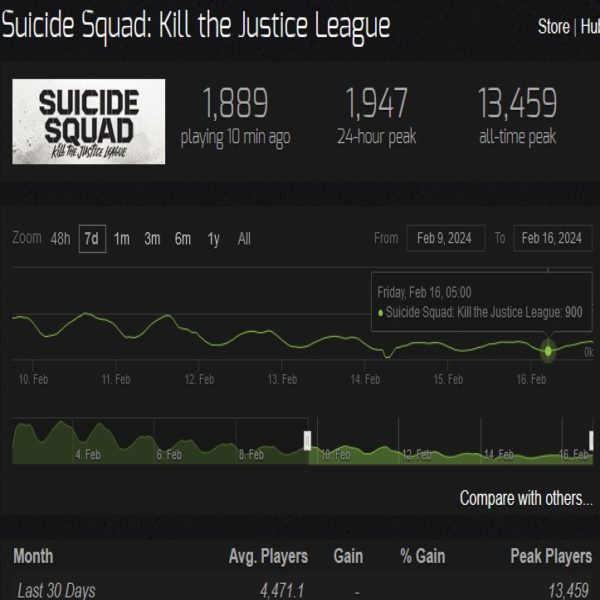

Rocksteady Studios’ Suicide Squad: Kill the Justice League has been mired in controversy ever since the game was announced. There have been online detractors regarding the gameplay, the story, the character designs, the base concept of the game, the awful Games as a Service (GAAS) business design. But regardless of how one personally feels about Rocksteady’s latest endeavor into the DC Comics universe, you can’t deny that when a playerbase doesn’t want a game to succeed, they really go out of their way to make sure it underperforms, as evident by Suicide Squad: Kill the Justice League’s insanely low playercount as seen on Steamcharts.
At the time of writing, Suicide Squad: Kill the Justice League is just barely keeping its head under water at 1,889 players, which is incredibly low for a AAA game with doubtless millions of dollars behind its development, but that’s not the worst news for the cape game, earlier today the game dipped to merely 900 players.


900 players on a Friday is insanely low, the type of numbers you’d expect a game that’s several years old with no support to pull, not a massive multiplayer game that just released a little over two weeks ago. With the GAAS development plan that Rocksteady has adopted for Suicide Squad: Kill the Justice League, a monetization plan that depends on player engagement for several months if not years in order to maximize profit, looking more and more bleak as the days wane on and the peak player count falls lower and lower.
Many players are undoubtedly overjoyed by this development, as the stance of the average video game player on GAAS games has been pretty staunchly against it ever since the concept was introduced. However, keep in mind that in November of last year WB Games had doubled down on their decision to present their newest releases as live service titles, despite their biggest game of the year Hogwarts Legacy proving that a well-presented IP can outsell every other game on the market. Time will only tell if Suicide Squad: Kill the Justice League’s flop will convince Warner Brothers that the decision to make their games live service is a good idea.
Play games, take surveys and take advantage of special offers to help support mxdwn. Every dollar helps keep the content you love coming every single day.
